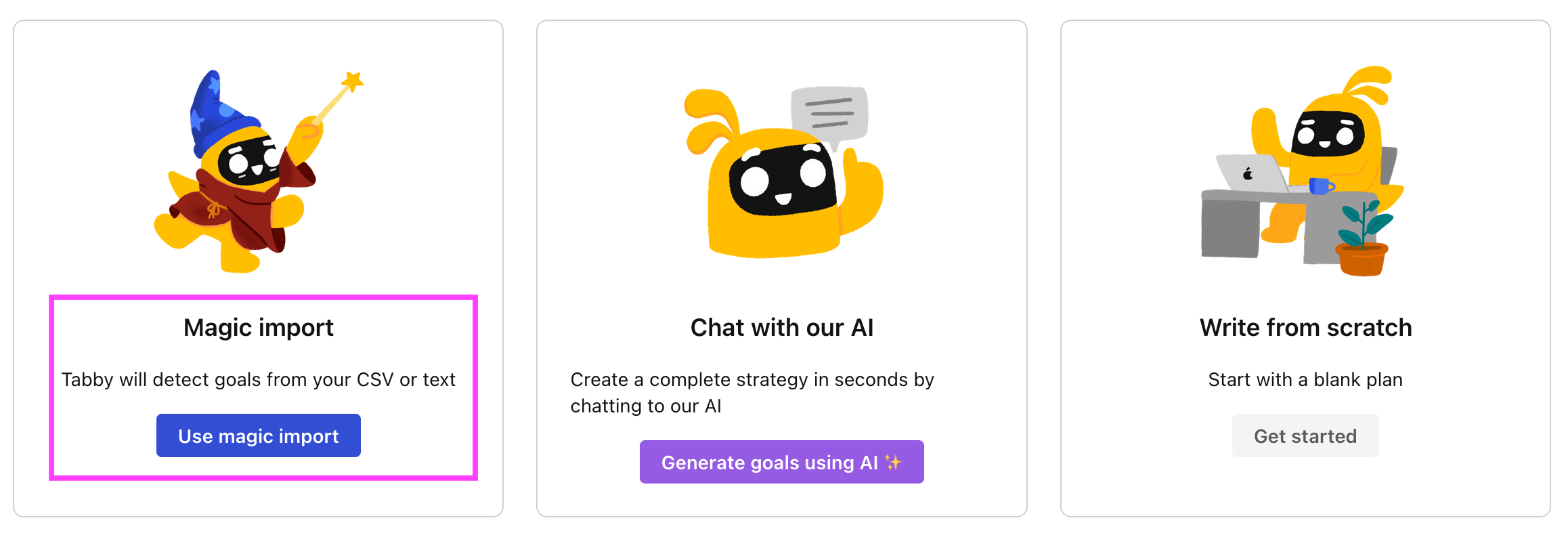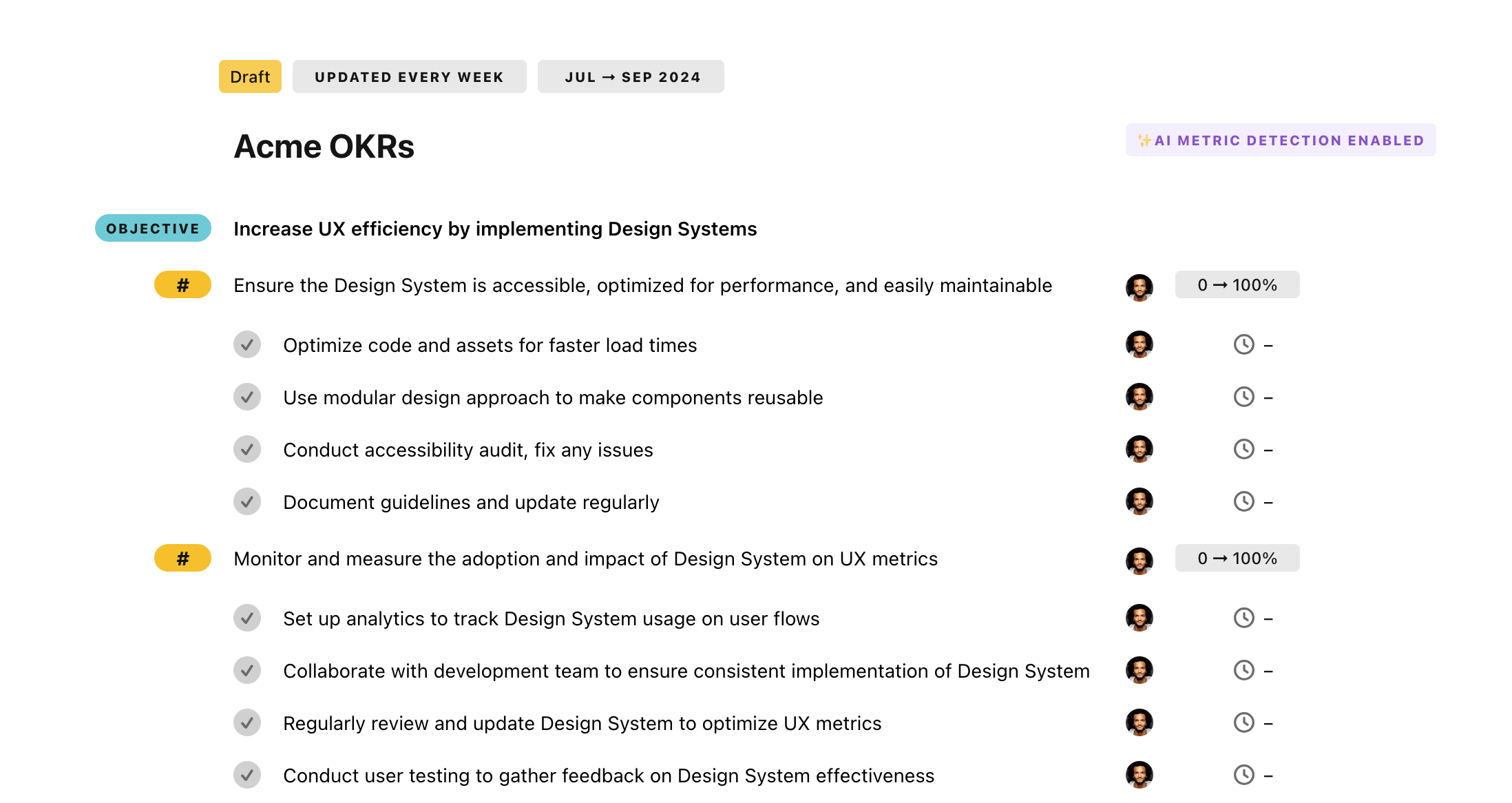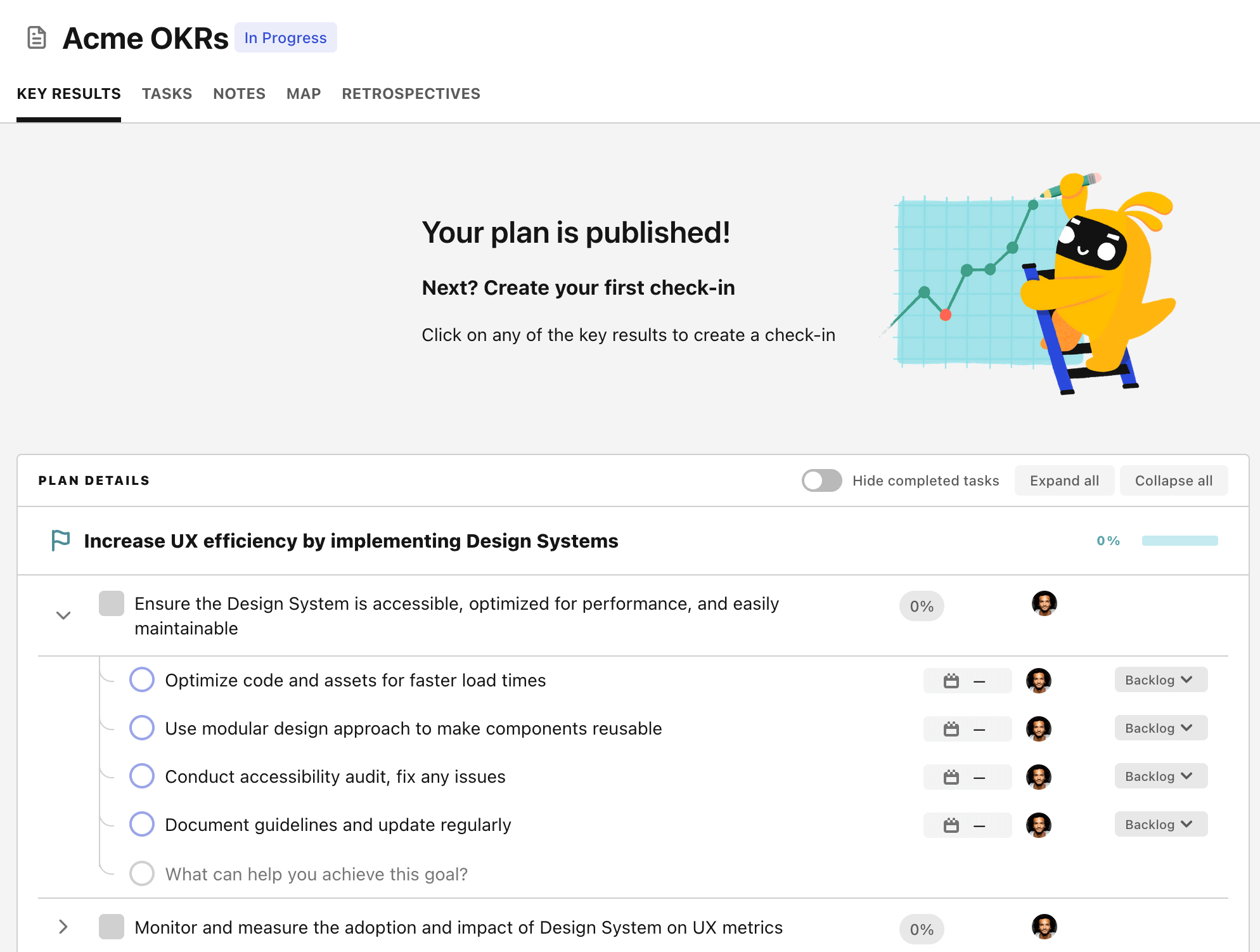OKR template to to identify AI use cases from 12 different departments
Your OKR template
The first outcome aims to identify and document AI use cases from the remaining 5 departments by the end of week 12. Initiatives include documenting all recognized AI use cases by week 11 and identifying departments utilizing AI by week 10. The final step is to organize and finalize documentation by week 12.
The second outcome focuses on engaging with a new set of 4 departments and securing their AI use cases by week 8. Finalizing and securing these use cases, identifying departments for potential AI integration, and scheduling meetings with each department's head are the pertinent initiatives.
The third outcome entails collaborating with 3 departments to document AI applications by week 4. This includes documenting recognized AI applications and compiling a report by week 4, identifying key contacts in each department, and arranging a cross-department brainstorming session for week 2.
ObjectiveTo identify AI use cases from 12 different departments
KRComplete identification and documentation of AI use-cases from remaining 5 departments by week 12
Document all identified AI use-cases by week 11
Finalize and organize documentation by week 12
Identify remaining departments using AI by week 10
KREngage with another set of 4 departments and secure their AI use cases by week 8
Finalize and secure their AI use cases
Identify four departments for potential AI integration
Schedule meetings with each department's head
KRCollaborate with 3 departments to identify and document AI applications by week 4
Document identified AI applications and compile report by week 4
Identify key contacts in each department for AI application discussions
Organize cross-departmental brainstorming sessions for week 2
How to edit and track OKRs with Tability
You'll probably want to edit the examples in this post, and Tability is the perfect tool for it.
Tability is an AI-powered platform that helps teams set better goals, monitor execution, and get help to achieve their objectives faster.
With Tability you can:
- Use AI to draft a complete set of OKRs in seconds
- Connect your OKRs and team goals to your project
- Automate reporting with integrations and built-in dashboard
Instead of having to copy the content of the OKR examples in a doc or spreadsheet, you can use Tability’s magic importer to start using any of the examples in this page.
The import process can be done in seconds, allowing you to edit OKRs directly in a platform that knows how to manage and track goals.
Step 1. Sign up for a free Tability account
Go tohttps://tability.app/signup and create your account (it's free!)
Step 2. Create a plan
Follow the steps after your onboarding to create your first plan, you should get to a page that looks like the picture below.

Step 3. Use the magic importer
Click on Use magic import to open up the Magic Import modal.
Now, go back to the OKR examples, and click on Copy on the example that you’d like to use.

Paste the content in the text import section. Don’t worry about the formatting, Tability’s AI will be able to parse it!

Now, just click on Import from text and let the magic happen.

Once your example is in the plan editor, you will be able to:
- Edit the objectives, key results, and tasks
- Click on the target 0 → 100% to set better target
- Use the tips and the AI to refine your goals
Step 4. Publish your plan
Once you’re done editing, you can publish your plan to switch to the goal-tracking mode.

From there you will have access to all the features that will help you and your team save hours with OKR reporting.
- 10+ built-in dashboards to visualise progress on your goals
- Weekly reminders, data connectors, and smart notifications
- 9 views to map OKRs to strategic projects
- Strategy map to align teams at scale